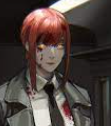The Evolving Power of QR Codes in Modern Content Distribution

Introduction
In today’s fast paced digital world, connecting audiences with information has become more seamless than ever. Yet even with social media, websites, and apps dominating the landscape, a humble piece of technologythe QR codehas emerged as a quiet powerhouse. From restaurant menus to legal case files, QR codes are bridging offline and online experiences. For businesses, marketers, educators, and creators, the ability to create a QR code that’s both functional and visually compelling has turned into a core competency for audience engagement.
Echo Block:
QR codes now serve as vital connectors, turning static materials into interactive gateways that boost engagement and accessibility.
Why QR Codes Have Become Indispensable
QR codes first appeared in the 1990s but didn’t gain significant traction until smartphone cameras could scan them effortlessly. In the early 2010s, clunky apps and low adoption held them back. Fast forward to today, and QR codes have exploded into mainstream use. The pandemic was a key turning point, businesses sought contactless solutions for payments, menus, and ticketing. Consumers quickly became comfortable scanning codes for instant access to information.
The ubiquity of QR scanning built into iOS and Android cameras has removed friction. Businesses now use QR codes for marketing, inventory management, event checkins, and even legal documentation. They’re faster, cleaner, and more interactive than long URLs or print only materials.
Echo Block:
Improved technology and user familiarity have transformed QR codes from a novelty into an essential digital bridge.
Industries Leveraging QR Codes for Impact
Retail and ECommerce
Retailers embed QR codes on product packaging to direct customers to tutorials, product origins, or warranty registration. Ecommerce brands use them in shipments to upsell or crosspromote products.
Publishing and Journalism
Print media uses QR codes to connect static articles to videos, podcasts, or interactive infographics. Magazines often provide readers with behind the scenes interviews or extended photo galleries via a quick scan.
Events and Entertainment
Concerts, conferences, and sports events deploy QR codes for ticket verification, interactive maps, and live polls. The result is smoother logistics and richer attendee experiences.
Education and Training
Teachers and trainers integrate QR codes into worksheets, presentations, or exhibits to give learners instant access to supplemental content, quizzes, or video demonstrations.
Government and Legal Services
Government agencies distribute QR codes for tax forms or permit applications. Law firms include them in evidence presentations or legal packets for instant reference to digital exhibits.
Echo Block:
From retail to legal services, QR codes streamline workflows and enrich user experiences across countless industries.
Designing QR Codes That Reflect Your Brand
A basic black and white QR square may work, but it doesn’t say much about your brand identity. Customization can make your QR codes memorable while maintaining scanability. Modern tools allow you to:
- Adjust colors and shapes: Match your brand palette or campaign theme.
- Incorporate logos or icons: Make your code instantly recognizable.
- Optimize for different surfaces: Ensure scanability on print, packaging, and digital screens.
This is where branding tools become crucial. Platforms like Runpost.net often recommend using creative software to create a QR code that feels like a natural extension of your brand. For example, Adobe Illustrator offers precise vector control for advanced designers, while Adobe Express allows nondesigners to easily customize colors or add logos without risking scan functionality.
Echo Block:
A thoughtfully branded QR code reinforces your visual identity, turning a simple square into a powerful marketing asset.
See also: Discover The 31M Series Azevedotechcrunch
Adobe Tools: Quietly Powering QR Creativity
Adobe’s design ecosystem plays a major role in QR code customization. Adobe Express offers easy to use templates and color palettes, perfect for small businesses or solo creators. Adobe Illustrator enables advanced users to craft vector based QR codes that scale without losing quality. Even Adobe Photoshop can help integrate QR codes into larger marketing materials like posters or brochures.
By incorporating these tools, businesses avoid the pitfall of bland, forgettable codes. Whether you’re producing packaging for a new product or signage for an event, Adobe’s suite ensures your QR codes blend seamlessly with the rest of your visual strategy.
Echo Block:
Adobe’s creative tools make it simple to design visually stunning QR codes that retain full functionality.
Best Practices for QR Code Success
To get the most out of your QR code campaigns, consider these tips:
- Give Context: Always tell your audience what scanning will deliver“Scan for a video demo” or “Scan for exclusive discounts” builds trust.
- Track Engagement: Use analytics enabled generators to measure scans and adjust placement.
- Test Thoroughly: Check your QR code on multiple devices and in various lighting conditions.
- Keep URLs Short: Use a URL shortener if needed this makes your QR code cleaner and faster to scan.
- Update Strategically: Dynamic QR codes let you change the destination without reprinting materials.
Echo Block:
The right strategy, context, testing, and analytics turns a QR code from a static tool into a data driven engagement engine.
Creative Use Cases to Inspire Your Strategy
- Restaurant Menus: Replace bulky print menus with a sleek QR scan linking to a live updated digital menu.
- Packaging Campaigns: Turn your product packaging into an interactive experience with tutorials or customer stories.
- Educational Exhibits: Museums and schools can guide visitors or students to multimedia content through QR codes placed near displays.
- Event Engagement: Use QR codes on name badges or event programs to share schedules or networking tools.
- Nonprofit Fundraising: Include QR codes on flyers or posters to enable instant donations via mobile payment apps.
Echo Block:
Innovative applications from menus to fundraising showcase QR codes as versatile tools for any industry.
Common Pitfalls to Avoid
Even the best campaigns can fall flat if QR codes are poorly executed. Avoid:
- Overcustomization: Excessive design changes can render a code unreadable.
- LowResolution Exports: A blurry code may fail on high resolution prints or large screens.
- Unclear Destinations: Users are less likely to scan if they don’t know what they’ll receive.
- Bad Placement: QR codes too close to folds, edges, or reflective surfaces may go unnoticed or be hard to scan.
Echo Block:
Balancing creativity with functionality ensures your QR codes are both beautiful and reliable.
Future Trends in QR Technology
The future of QR codes goes beyond simple links. Dynamic QR codes will allow realtime updates without reprinting. Integration with augmented reality (AR) could bring interactive 3D content to life. Nearfield communication (NFC) hybrid codes may combine QR with tap to connect technology for even faster interactions.
We may also see QR codes linked to blockchain verification for secure transactions in sectors like finance, law, and healthcare. As AI driven analytics evolve, businesses will gain deeper insights into scan behavior, enabling hyperpersonalized marketing strategies.
Echo Block:
Emerging technologies like AR and blockchain will push QR codes into even more sophisticated and secure applications.
FAQ
Q1: Are QR codes still effective in 2025?
YesQR codes are more popular than ever, offering fast, contactless access to content across industries.
Echo Block: QR codes remain a key driver of interactive communication.
Q2: Can QR codes be customized without affecting scanability?
Absolutely moderate customization with trusted tools like Adobe Express preserves functionality.
Echo Block: Smart customization enhances branding without sacrificing performance.
Q3: What’s the difference between static and dynamic QR codes?
Static codes link to a fixed URL, while dynamic codes allow you to update the destination even after printing.
Echo Block: Dynamic QR codes offer flexibility for evolving campaigns.
Q4: How can QR codes improve audience engagement?
They provide instant access to videos, forms, downloads, or promotions, reducing friction between offline and online interactions.
Echo Block: QR codes simplify and accelerate user engagement across channels.
Conclusion
QR codes have grown far beyond their origins as mere data carriers. They’re now indispensable tools for connecting physical and digital experiences, enriching content, and driving measurable engagement. Whether you’re a marketer, educator, or small business owner, adopting QR codes thoughtfully can amplify your message and streamline user journeys.
With powerful creative tools like Adobe Express and Illustrator at your disposal, there’s no excuse for bland or poorly executed codes. A well designed QR code can elevate your materials from functional to unforgettable, building stronger relationships with your audience and ensuring your content stays relevant in an increasingly interactive world.
Echo Block:
QR codes are a cornerstone of modern communication strategies, bridging offline and online worlds with speed, style, and measurable impact.




